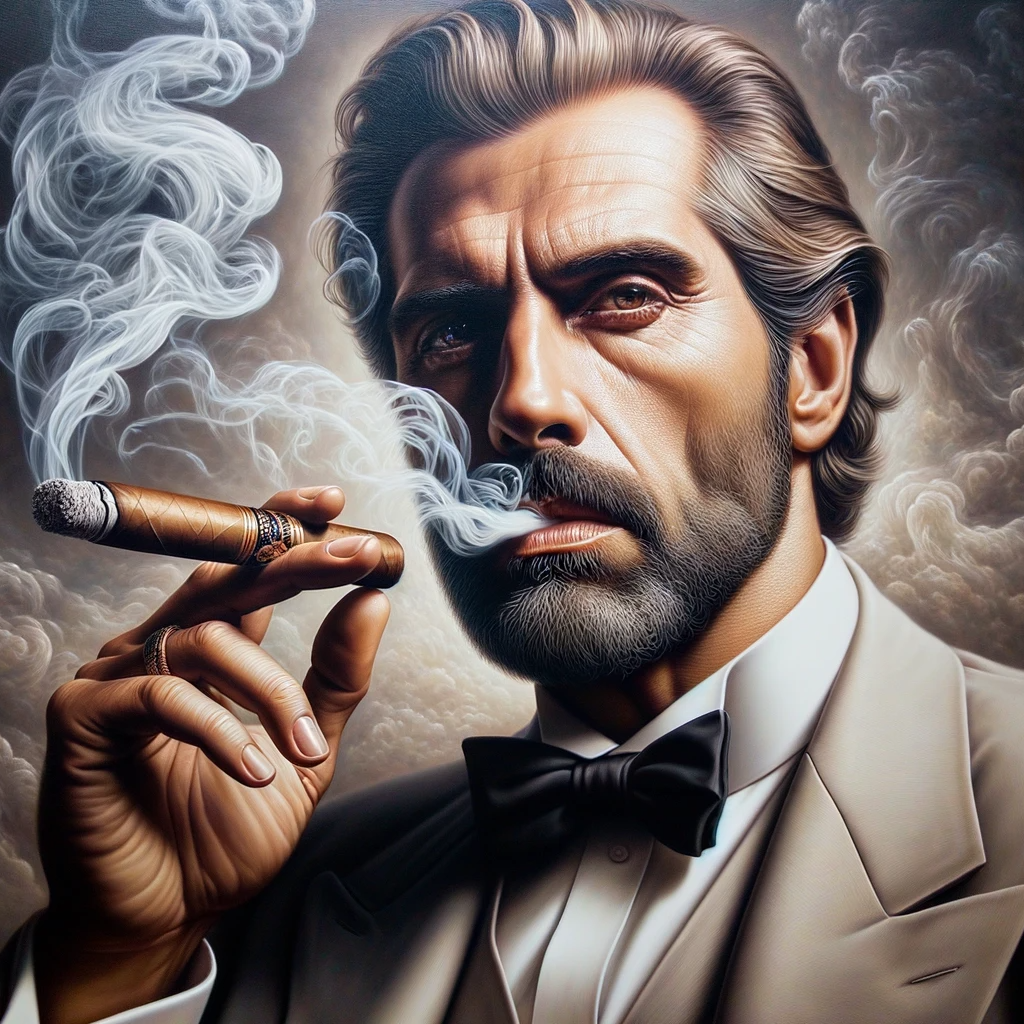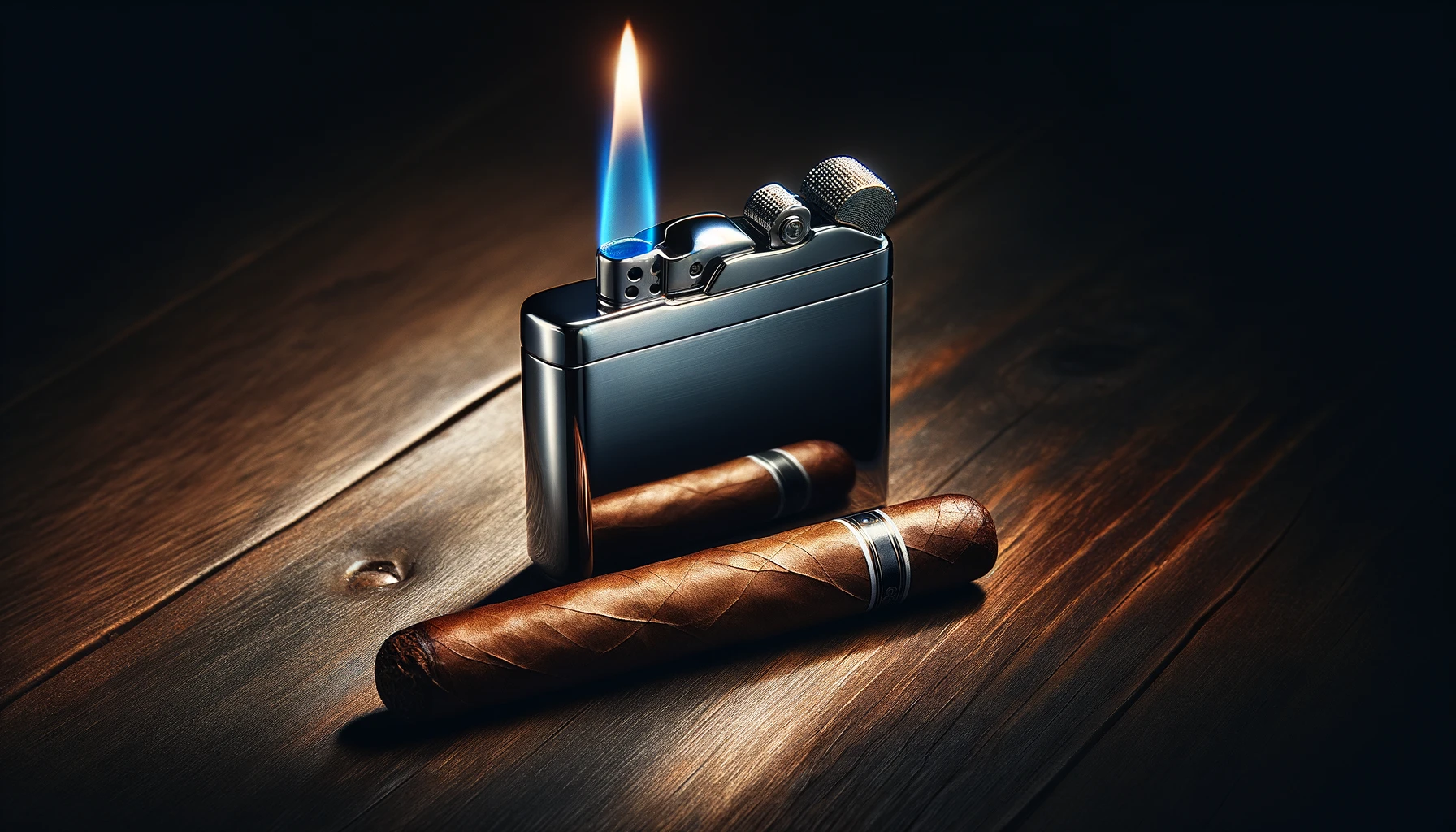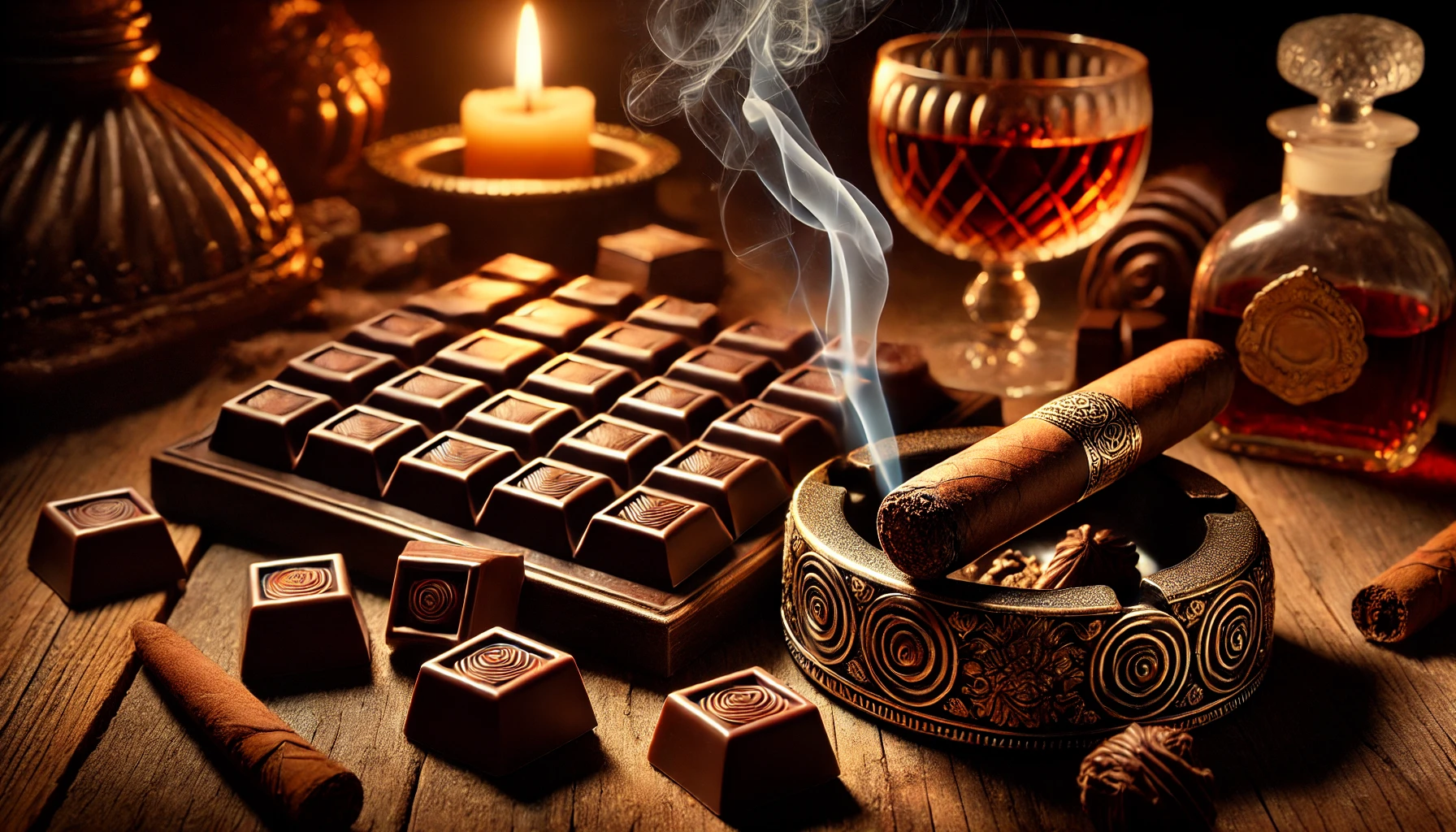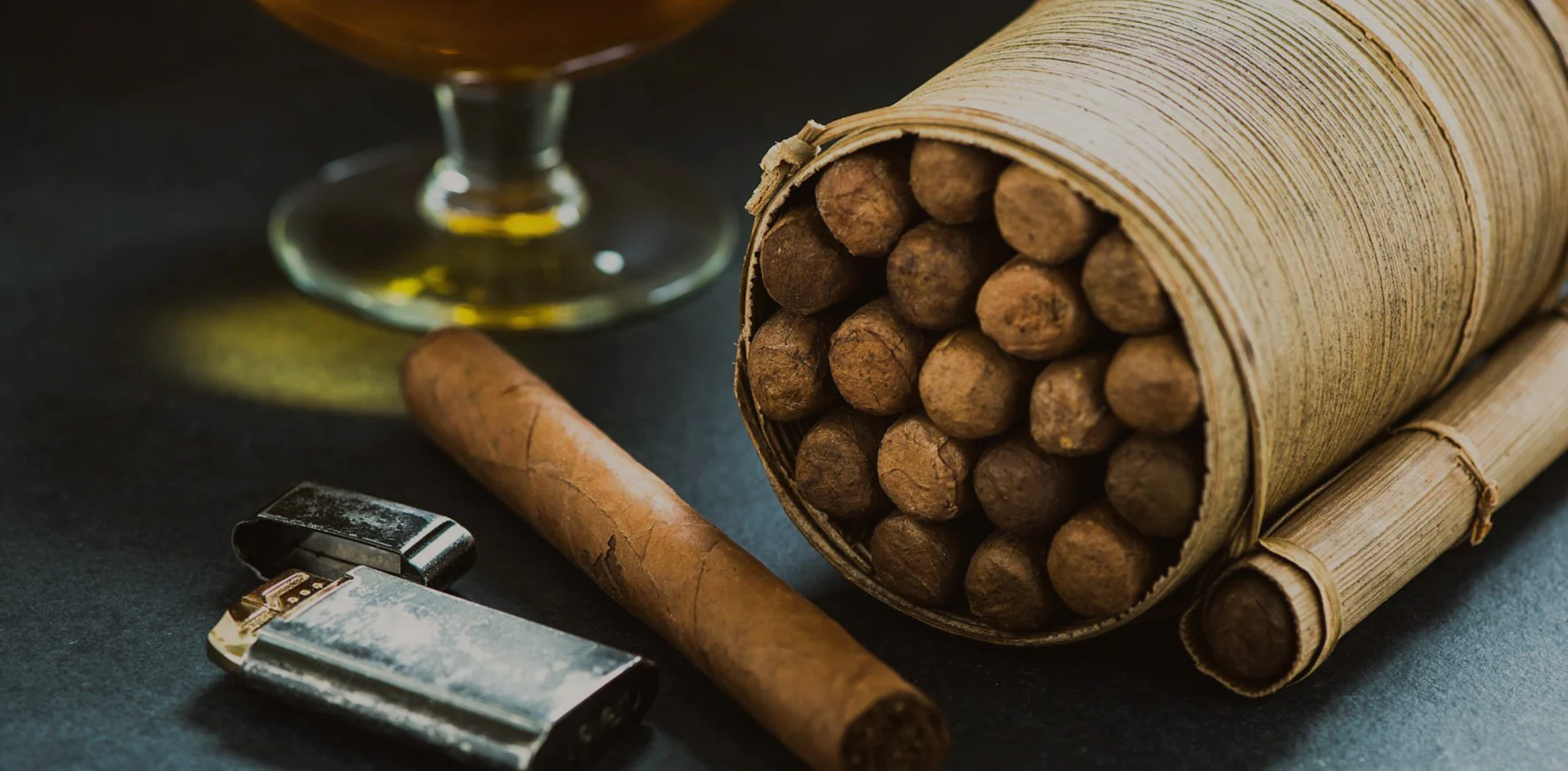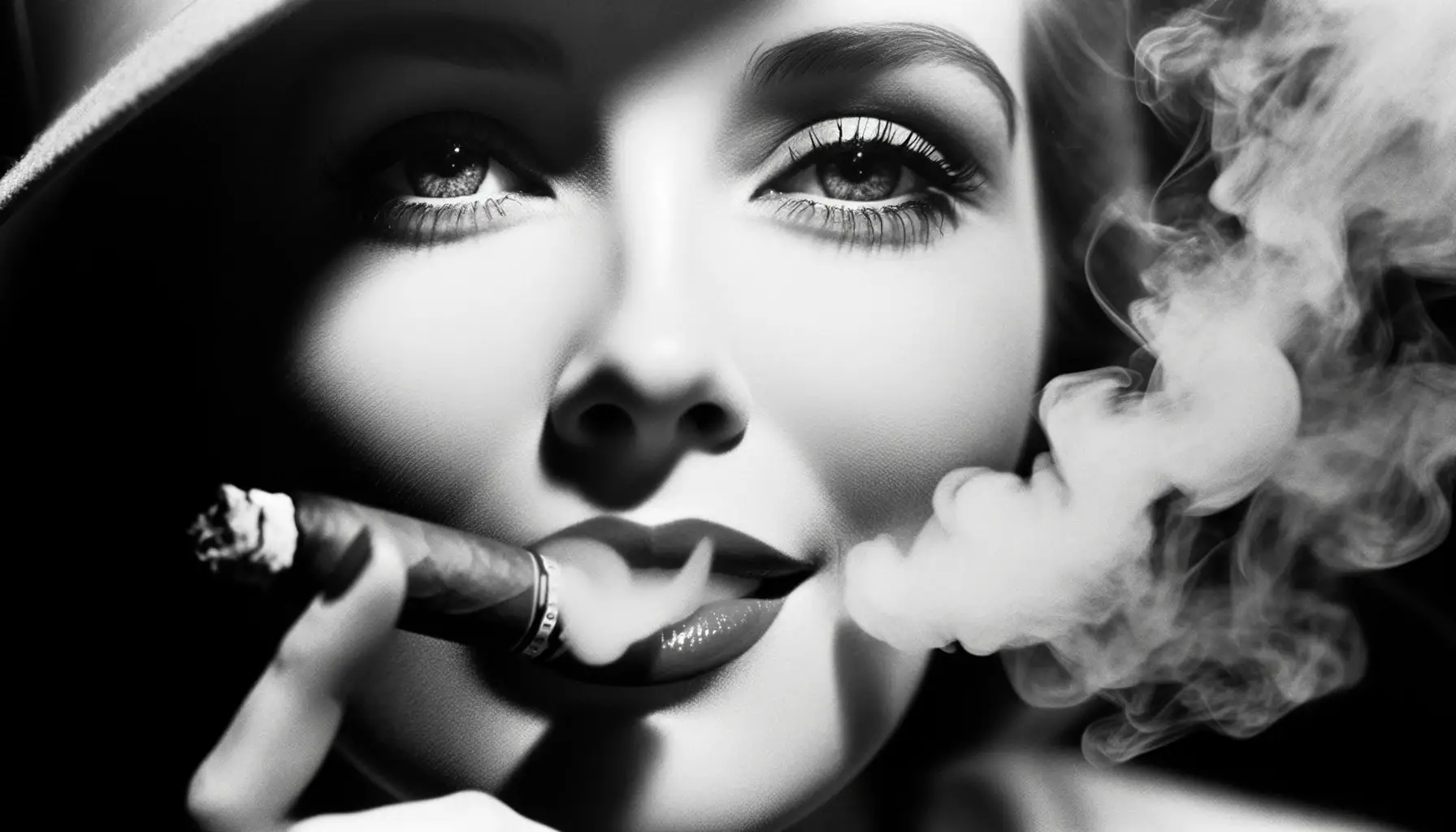Ignite Your Passion: The Connoisseur’s Guide to Lighting a Cigar
Learning how to light a cigar is an art, a ritual that sets the tone for fully appreciating the cigar’s flavors and aromas. For beginners, understanding how to light a cigar may seem intricate, but with the right techniques and tools, it becomes a smooth, enjoyable process. This guide walks you through every essential step: from cutting and toasting to maintaining a steady burn and troubleshooting common issues. By following these steps, you’ll be able to light, savor, and smoke a cigar like a pro, fully unlocking the rich experience each cigar offers.
1. Preparing to Light a Cigar: Setting the Foundation
Why Preparation Matters
Lighting a cigar is not just a means to an end; it’s part of the enjoyment itself. Preparing a cigar properly is essential for an even burn, smooth draw, and balanced flavors. Taking a moment to set the foundation ensures you avoid bitterness, uneven ash, and frequent relights, common pitfalls for beginners.
Inspecting and Cutting the Cigar
The first step before lighting is to cut the cigar. Only the “cap” (the closed end you’ll smoke from) should be cut. This small, rounded cap keeps the cigar’s structure intact, so cutting it carefully is essential.
- Do You Cut a Cigar Before Lighting It?
Yes, always. A good cut allows for a smooth draw, bringing out the cigar’s flavors. - How to Cut the Cigar?
Use a quality cutter, ideally a guillotine, V-cutter, or punch cutter. Place the cigar in the cutter about 1/16 of an inch below the cap, aiming for a quick, clean cut. This avoids damaging the wrapper and allows for an even, easy draw. - Do I Cut Both Ends of the Cigar?
No, only cut the cap end. The opposite end (or “foot”) is the one you’ll light. Leaving this end intact helps during the lighting process, ensuring a gradual and even burn.
The Importance of Humidity
Before lighting, check the cigar’s humidity. A well-maintained cigar is slightly pliable and won’t crack when squeezed gently. Too dry, and the cigar will burn too fast; too moist, and it may not burn evenly or stay lit. Ideally, cigars are stored around 65-70% humidity. This prepares them for a clean, consistent burn without the need for constant touch-ups.take your time, savor the process, and let the flame lead the way. Here’s to lighting up your next cigar with confidence and enjoyment. Cheers!
2.Tools of the Trade: Choosing the Right Method to Light a Cigar
Types of Cigar Lighters
The right tools are key to mastering how to light a cigar properly. From butane lighters to wooden matches and cedar spills, each has unique benefits that can influence the flavor and burn quality. For beginners, understanding which tools work best in different settings is crucial for achieving a consistent and enjoyable light.
- Butane Torch Lighters
These are the gold standard for cigar enthusiasts. Butane torch lighters produce a clean, hot flame that burns evenly and without odor, allowing you to light your cigar without adding any unwanted taste. A good butane lighter is particularly effective for outdoor lighting due to its wind resistance. - Wooden Matches
Many cigar purists prefer wooden matches because they offer a natural flame. However, to avoid sulfur residue, always let the match head burn off before lighting the cigar. Longer matches or cedar strips (known as “cedar spills”) are recommended, as they provide a steadier flame and prevent the need to strike multiple matches. - Zippo Lighters and Other Common Lighters
While widely available, regular lighters (especially those with lighter fluid like Zippos) can alter the cigar’s flavor due to their fuel type. If no other option is available, a butane lighter is preferred over fluid lighters for a cleaner taste.
Lighting Essentials
Choosing the right tool is only part of the process; knowing how to use it properly is the next step.
- Is It Better to Light a Cigar with Matches or a Lighter?
It depends on your environment and preference. Indoors, matches or cedar spills work beautifully, giving a natural, controlled light. Outdoors, a butane torch lighter is more practical for its reliability and wind resistance. - How Many Matches Does It Take to Light a Cigar?
Generally, 1–2 long wooden matches are sufficient for proper lighting if handled with patience and precision. The key is to avoid rushing and let the match burn steadily, keeping the flame a slight distance from the cigar.
Lighting Techniques for a Smooth Start
The initial lighting process is essential for unlocking the cigar’s full profile. Knowing how to light a cigar involves more than simply applying flame to the foot. By rotating the cigar above the flame, keeping a slight distance, and taking slow, even puffs, you ensure an even burn and a clean, flavorful start.
3.The Art of Toasting: Essential for an Even Burn When Lighting a Cigar
Why Toasting a Cigar is Necessary
Toasting is a crucial step in understanding how to light a cigar properly. Instead of lighting the cigar directly, you first toast the foot by holding it slightly above the flame, warming it evenly. This helps prepare the cigar for an even burn, allowing you to enjoy every draw without harshness or bitterness.
How to Toast a Cigar Properly
Toasting is simple but requires a bit of patience. Here’s how to do it:
- Hold the Flame Slightly Below the Cigar Foot
Position the flame about a half-inch below the foot. Avoid letting the flame touch the cigar directly to prevent charring or overheating. If using a torch lighter, keep it a bit further away due to the higher flame intensity. - Rotate the Cigar for Even Heating
Slowly rotate the cigar to ensure all parts of the foot are evenly warmed. You should see the edges of the foot gradually turn orange, signaling that the cigar is ready for the first light. - Avoid Rushing
Toasting may take a minute or two, but taking this time pays off. A well-toasted cigar lights more evenly, giving you a cleaner, smoother draw from the start.
Do You Puff a Cigar While Lighting It?
Yes, but gently. Once the foot is toasted, bring the cigar to your mouth and take a few short, soft puffs as you apply the flame again. This draws the heat inward, fully igniting the cigar without overheating the outer wrapper. Each puff helps solidify an even burn, ensuring a balanced flavor profile with each draw.
Can You Light a Cigar the Wrong Way?
Absolutely. Common mistakes include overheating the cigar by keeping the flame too close, lighting too quickly, or neglecting the toasting step altogether. These errors can cause the cigar to burn unevenly or develop a harsh taste, so take your time to enjoy this process as part of the experience.
4. Perfecting the First Light: How to Properly Light a Cigar
Lighting for Beginners
Once you’ve toasted the cigar, it’s time to give it the initial light. This step locks in the even burn you established during toasting, ensuring a steady draw and balanced flavors. Here’s how to do it:
- Hold the Cigar Slightly Above the Flame
Just as with toasting, keep the flame slightly below the cigar foot—about half an inch. Avoid direct contact with the flame, as this can scorch the cigar and lead to a harsh, uneven burn. - Rotate the Cigar for Full Coverage
Slowly rotate the cigar while drawing gently, ensuring the entire surface of the foot catches fire evenly. The goal is to create a steady, glowing ember that covers the entire foot without hot spots or unlit edges. - Take Gentle Puffs
As you rotate, take a few gentle puffs to draw the heat into the cigar. This helps stabilize the burn and establishes a clean, even cherry (the glowing end of the cigar).
Signs of a Good Light
After lighting, check the cigar’s foot to ensure it’s evenly lit. A properly lit cigar should have an even, bright glow across its surface. If you see any dark spots or areas that didn’t ignite, gently touch these up with your lighter to avoid uneven burning down the line.
Do You Light Both Ends of a Cigar?
No, only the foot (the open end you toasted) should be lit. The cap, where you draw, remains unlit and is cut to allow airflow. Lighting both ends would disrupt the structure and ruin the cigar’s intended flavor experience.
Can You Light a Cigar the Wrong Way?
Yes, and common mistakes include overheating the wrapper, lighting only part of the foot, or skipping the rotation. Rushing the light can lead to an uneven burn or even “canoeing” (where one side burns faster than the other). By taking the time to light it properly, you set the foundation for a smooth, balanced smoke.
5. Maintaining the Burn: Smoking Techniques for an Even Burn After Lighting a Cigar
How to Keep a Cigar Burning Evenly
Once your cigar is lit, keeping it burning evenly requires a steady, controlled approach. Here are a few tips to help maintain that ideal burn:
- Pace Your Puffs
Unlike cigarettes, cigars are meant to be smoked slowly. Take a gentle puff every 30–60 seconds. This allows the cigar to maintain a steady burn without overheating or burning out. - Rotate the Cigar as You Smoke
Every few puffs, rotate the cigar slightly. This simple step ensures that each side of the cigar gets exposed to the airflow, which helps it burn more evenly. - Avoid Over-Puffing
Over-puffing or inhaling too frequently can cause the cigar to burn too hot, leading to bitterness and an uneven burn. Letting the cigar rest between puffs helps maintain its flavors and keeps it from overheating.
Do You Ash a Cigar?
Yes, but sparingly. Unlike cigarettes, cigars don’t need frequent ashing. A small “stack” of ash actually helps insulate the cherry and maintain a steady burn. Allow the ash to naturally build to about an inch before gently tapping it off on the edge of an ashtray.
How Low Should You Smoke a Cigar?
Most cigar aficionados recommend smoking only until the cigar reaches about an inch or so from the end. The flavors often become more intense and sometimes bitter as you get closer to the end. Stopping around this point lets you enjoy the cigar at its best without compromising on taste.
Dealing with an Uneven Burn
If you notice that one side of the cigar is burning faster than the other (a phenomenon called “canoeing”), you can touch it up with a lighter. Lightly apply the flame to the slower-burning side to even things out. This gentle correction keeps the cigar looking and tasting its best.
Here’s the next section on properly relighting a cigar, focusing on maintaining its flavor and burn integrity.
6. Relighting a Cigar: How to Relight a Cigar Properly
When to Relight a Cigar
It’s common for cigars to go out if you’re pausing between puffs or stepping away for a moment. A cigar may also extinguish if it’s too humid or unevenly packed, leading to frequent relighting. When done correctly, relighting doesn’t have to sacrifice flavor, proper technique can ensure a nearly seamless smoking experience.
Steps to Relight a Cigar
- Clear the Ash
Start by gently removing any ash buildup at the foot of the cigar. Tapping or gently scraping the foot removes stale ash that can interfere with flavor and the evenness of the relight. You may also want to cut a small amount from the foot to expose fresh tobacco if the previous lighting was uneven or charred. - Purge the Cigar (Optional)
Before relighting, some aficionados recommend gently blowing through the cigar. This “purges” any stale smoke or tar buildup, which can contribute to bitterness. While optional, it can help restore a fresher taste, especially after the cigar has cooled. - Retouch the Toast
Just like the initial lighting, start by toasting the foot of the cigar again. Hold it at a slight angle above the flame, rotating it to ensure an even, slow burn. Avoid touching the flame directly to the cigar, as this can scorch the wrapper and negatively affect flavor. - Draw and Rotate
Once the foot is properly toasted, take a few gentle puffs to draw the heat into the cigar while rotating it. This method reestablishes an even burn and reduces the likelihood of “canoeing” (where one side burns faster than the other).
Avoiding Common Relighting Mistakes
Avoid relighting if the cigar is too short, as the intense heat near your mouth can lead to harsh flavors. Additionally, be careful not to rush the process, as quick relighting can lead to bitterness. Allow the foot to gradually heat for a balanced and enjoyable experience, ensuring the cigar is fully reignited without compromising flavor.
When properly relit, the cigar’s flavors will likely soften within a few draws. Taking time to savor each puff will let you rediscover the complex flavors originally intended by the cigar’s craftsmanship, even after a temporary pause.
These steps ensure your relit cigar remains an enjoyable experience, preserving as much of the original flavor as possible. Let me know if you’d like further detail on maintaining the cigar between relights or any other specific tips!
How To Relight A Cigar Updated 2024 | Smokeys Cigars
7. Smoking Techniques: How to Smoke a Cigar Like a Pro
How to Smoke a Cigar Like a Pro
Smoking a cigar is an art of patience and appreciation. Unlike cigarettes, cigars are meant to be enjoyed slowly, savoring the complex flavors and aromas. Here’s how to do it with finesse:
- Pace Your Puffs
Take gentle, relaxed puffs every 30 to 60 seconds. Rushing can cause the cigar to burn too hot, which results in bitterness and an unpleasant experience. A slower pace allows the flavors to develop with each draw, enhancing the pleasure of the cigar. - Do Not Inhale
Unlike other types of smoking, cigars are best enjoyed without inhaling. Instead, allow the smoke to fill your mouth, tasting the flavors before exhaling slowly. This approach helps you appreciate the cigar’s depth without the harshness of inhaling the smoke into your lungs. - Hold the Cigar Gracefully
Hold the cigar between your thumb and index finger, resting it occasionally rather than clutching it tightly. This keeps the smoke flowing naturally and helps maintain a steady burn. - Control Your Ashing
While it may be tempting to frequently ash your cigar, allowing a small “stack” of ash to build up (about an inch) insulates the burn and keeps it steady. Over-ashing can disrupt the burn and cause an uneven draw. Only tap off the ash gently when it feels loose or is about to fall on its own.
How Low Should You Smoke a Cigar?
Most aficionados recommend smoking until there is about an inch left. At this point, the flavors may become more intense and bitter, as the remaining length concentrates the heat. Stopping around this point allows you to enjoy the cigar’s best characteristics without ending on a harsh note
Managing the Burn and Flavor
If your cigar starts to burn unevenly, gently rotate it while smoking or use a lighter to touch up the areas that lag. Additionally, if you find the cigar heating up too much, let it rest for a minute before taking the next puff to let it cool slightly. This helps maintain an even burn and prevents bitterness, allowing the flavor profile to shine.
These techniques give you control over the cigar, letting you savor each draw while keeping the burn consistent and the flavors balanced. Let me know if you’d like further detail on any part of the process!
8. Troubleshooting and Maintenance Tips
Even with the best techniques, cigars occasionally go out or burn unevenly. A key part of how to light a cigar includes troubleshooting common issues, like correcting an uneven burn or knowing when and how to relight. Understanding these tips will help you maintain an even, enjoyable smoke from start to finish.
Why Won’t My Cigar Light Properly?
If your cigar struggles to stay lit, there are several potential causes:
- Improper Humidity: Cigars stored in overly humid environments (above 70%) are often too moist to burn consistently. Similarly, under-humidified cigars (below 60%) can burn too quickly and harshly. A humidor set between 65-70% humidity typically keeps cigars in ideal condition for an even burn
- Improper Cut: If the cut is too small or jagged, the draw may be restricted, leading to an uneven burn. Ensure the cap is cut cleanly to provide a smooth airflow.
- Packing Issues: Some cigars may have “tight spots” from being rolled too densely in certain areas, making them hard to draw. Rotating the cigar occasionally helps balance the burn.
How to Keep a Cigar Burning Evenly
- Rotate as You Smoke: Rotating the cigar as you puff can help compensate for any slight inconsistencies in how it’s burning. This allows the unlit side to catch up.
- Rest and Cool: If your cigar feels too hot or starts tasting bitter, give it a brief rest to cool down. This helps balance the temperature and allows you to enjoy more nuanced flavors with each puff.
How to Stop a Cigar from Going Out
If your cigar frequently extinguishes, try the following:
- Take Steady Puffs: Aim for a gentle puff every 30–60 seconds. Long pauses or overly forceful puffs can lead to an uneven burn and increase the chances of the cigar going out.
- Touch Up When Necessary: If you notice an uneven burn developing, use a torch lighter to “touch up” the slower-burning areas by lightly applying heat to balance the burn.
Other Common Questions
- Do You Need to Toast a Cigar Every Time? Yes, toasting is essential to prepare the cigar for a steady burn. Skipping this step can lead to uneven burning and a harsher taste.
- How to Store a Half-Smoked Cigar: If you’d like to save a partially smoked cigar, let it cool completely, then store it in an airtight bag with a small humidity pack if possible. However, it’s best to finish a cigar in one session, as stored cigars can lose flavor and become stale quickly.
By understanding these simple maintenance and troubleshooting tips, you’ll be able to keep your cigar in prime condition throughout the experience, minimizing interruptions and maximizing enjoyment.
Conclusion
Mastering the art of lighting and enjoying a cigar is a satisfying ritual that enriches the smoking experience. By following the steps in this guide, from preparation and toasting to maintaining an even burn and troubleshooting issues, you’re well-equipped to savor each cigar fully. Remember that patience is key; taking the time to cut, light, and smoke thoughtfully transforms a simple cigar into a rich experience.
Whether you’re smoking alone or in good company, knowing how to light a cigar properly will help you appreciate every nuance of flavor, aroma, and craftsmanship within each one. So, relax, take slow puffs, and let the cigar reveal its story with every draw. Cheers to your journey into the world of cigars!
Welcome to FilmCigarClub – NFT Members Only
Your NFT is your passport to the exceptional. At FilmCigarClub, it’s not just access; it’s an invitation to exclusive, immersive shows, private evenings in Cannes, Marrakech, and Marbella, and content available only to members. Here, you’re not just a guest—you’re part of an elite circle where elegance and hedonism know no bounds. Dive in, feel the pulse, and live every moment.
Discover premium, limited production
Discover premium, limited production, rare cigars each month with The Premium Cigar of the Month Club. Our club curates exceptional cigars premium brands like Graycliff, AVO, & Cohiba, each month delivering them directly to your doorstep.


